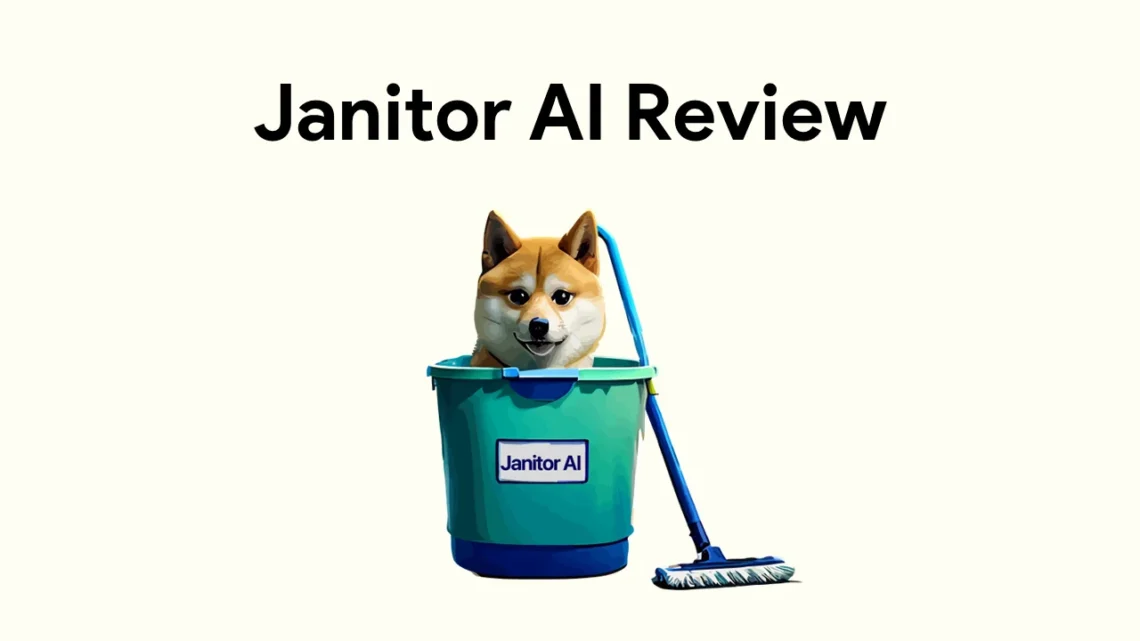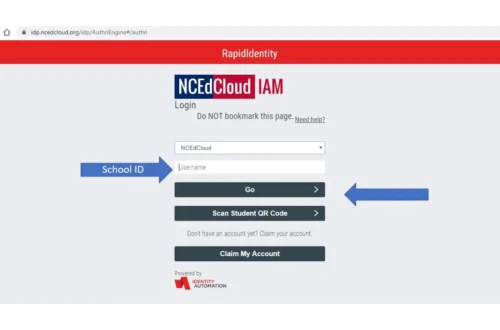As conversational AI technology advances, platforms like JanitorAI are gaining attention for blending creative roleplay, character interaction, and flexible AI backends. What was once the domain of basic chatbots is morphing into immersive experiences. This article covers what JanitorAI is, its key features, how it operates under the hood, use cases and concerns, safety & moderation challenges, and where it might head in the future.
What Is JanitorAI?
JanitorAI is a browser-based chatbot platform that enables users to chat with custom AI characters or “bots” that simulate personalities, backgrounds, moods, and more. Unlike simple assistants designed for tasks or Q&A, JanitorAI emphasizes roleplaying, storytelling, and immersive conversational experience.
Users can choose from a library of prebuilt characters or create their own. These characters can have traits, memory settings, customized greetings, and dialogue styles. The platform supports features such as toggles for NSFW content, different conversation modes, emotional tone adjustments, and switches between “limited” or “limitless” interactions.
While JanitorAI provides the front-end interface and character engine, it typically relies on external AI models (via APIs or proxies) to generate the actual responses. In that way, JanitorAI is a middleware / platform wrapper rather than a self-contained LLM.
Core Features & What Makes JanitorAI Unique
One of the standout aspects of JanitorAI is how customizable and expressive it makes conversations. While many chatbots feel mechanical or generic, JanitorAI tries to bridge the gap by enabling:
-
Character customization: Users can define personality, style, memory, backstory, and example dialogues.
-
Immersive mode or narrative mode: The conversation feels more like a story than a Q&A interface. In immersive mode, message editing or deletions may be limited to create a more realistic flow.
-
Streaming / real-time response: Instead of receiving a full block of text, the AI can stream its response token by token, simulating typing or thought process.
-
Model flexibility: JanitorAI can connect to various backends — for example OpenAI’s GPT models, KoboldAI, or community proxies. Users may switch or experiment with different backend models.
-
NSFW toggle: There is often a switch or setting for whether sexual / mature content is allowed. This makes the platform more flexible but also brings moderation challenges.
-
User community & character sharing: Many users share their character setups, backstories, or personality templates through Discord, Reddit, or within JanitorAI’s character library.
These features let users co-create conversational experiences that feel more “alive” and personalized than generic AI assistants.
How JanitorAI Operates: Architecture & Workflows
To understand how JanitorAI works in practice, it helps to peek under the hood:
First, JanitorAI serves as a frontend / middleware interface. It provides UI, character management, memory systems, prompt orchestration, and configuration settings. But it usually does not host the AI model itself. Instead, it sends and receives data from external large language models (LLMs) via APIs or reverse proxies.
Here’s a simplified workflow:
-
User picks or creates a character, defines personality settings, memory, style, etc.
-
JanitorAI builds a base prompt combining the user’s context + character instructions + conversation history.
-
JanitorAI passes that prompt to a connected LLM backend (OpenAI, Kobold, etc.).
-
The backend returns a response; JanitorAI may stream it, post-process it, enforce moderation filters, then present it.
-
Memory / conversation history is stored (locally or in JanitorAI’s storage) so the bot “remembers” past interactions.
Because JanitorAI is modular, users can swap backends or proxies, balancing cost, latency, privacy, and model capabilities. However, using external models means users are exposed to those models’ pricing and limitations (token limits, latency, API errors).
Moreover, JanitorAI often supports reverse proxying (community proxy servers) so users who don’t have their own API keys can still connect through intermediaries. This can open access but also increases risk (security, reliability)
In short, JanitorAI acts as a layer of abstraction between user and LLM — handling setup, character logic, UI, moderation, and memory — letting users “just chat” without directly managing prompts.
Use Cases, Benefits & Risks
JanitorAI’s design supports a range of use cases, but it also carries potential pitfalls.
Use Cases & Benefits
Creative writing & roleplay: Writers use JanitorAI to prototype character interactions, test dialogue, explore narrative arcs, or simulate conversations. The immersive aspect helps spark ideas.
Companion / emotional outlet: Some people use AI characters as casual conversational companions or as a low-stakes space to talk or reflect (though it should not replace professional support).
Game or simulation design: Game developers may prototype NPCs (non-player characters) or dialog systems by having interactive bots that simulate behavior.
Entertainment & fan fiction: The flexibility and NSFW toggle attract users who want to roleplay favorite characters, engage in interactive stories, or experiment with scenario-driven dialogues.
Training or tutoring (limited): Because JanitorAI can be set up with educational personas (e.g. language tutor), some use it for casual conversational practice or scenario simulations.
Risks & Challenges
Inaccurate or unsafe content: As with all LLM-based systems, JanitorAI can produce hallucinations, inappropriate content, bias, or incorrect facts unless filtered well.
Privacy & data concerns: User conversation history, personality settings, or character memory may be stored. If using external APIs, prompts and chat data may be logged externally. Users should avoid sharing sensitive personal data.
NSFW / moderation issues: The toggle for mature content is a double-edged sword — it allows freedom but raises moderation risks, especially if minors access the platform or creators use the system irresponsibly.
Dependency or overuse: Some users might overly depend emotionally on AI characters or use them as substitutes for human connection.
Abuse & impersonation: There have been real-world cases where chatbots from platforms like JanitorAI were used maliciously. For example, a man used JanitorAI to impersonate a professor and lure strangers to her home in a cyberstalking case, showing how conversational AI can be weaponized.
Therefore, while the platform is imaginative and fun, users must be mindful of ethical boundaries.
Safety, Moderation & Governance
Because JanitorAI supports powerful customization and open-ended interaction, oversight is essential.
Moderation & filtering: The platform must enforce content filters for explicit language, hate speech, self-harm, or other harmful content. Many systems implement automated moderation, pattern detection, or use the backend model’s moderation tools.
Age gating & verification: To reduce the risk of minors obtaining or viewing explicit content, JanitorAI may require age checks or limit NSFW mode by default. However, enforcement is tricky in a browser-based environment.
User control & transparency: Users should have control over memory settings (what the character remembers), be able to erase conversations, and understand how data is used.
Secure integrations & proxies: When users connect via third-party proxies, those servers might see or intercept their conversation data. Users should vet proxy sources and use encrypted connections.
Community guidelines & reporting tools: To prevent abuse, JanitorAI needs robust user reporting, character banning, and community governance to flag harmful or misleading characters.
Legal compliance: Because user-generated content can be sensitive or explicit, the platform must navigate laws like obscenity, defamation, impersonation, and data protection (e.g. GDPR).
Being in beta also means Janitor AI is still evolving and may have vulnerabilities, downtime, or changes.
Future Directions & Challenges Ahead
What might the future hold for JanitorAI and platforms like it?
Better memory & personalization: Over time, Janitor AI will likely get more advanced memory systems so characters can recall earlier conversations more deeply and maintain coherent long-term personality arcs.
Multimodal & voice integration: Adding voice, images, or video capabilities — so that characters can speak, show expressions, or generate visuals — could bring a new level of immersion.
Stronger safety guardrails: Improved AI moderation, smarter detection of bad content, verification mechanisms, and trusted proxy systems will become critical.
Commercial / professional use: Janitor AI might evolve features to support customer service, training bots, or branded conversational personas for businesses — blurring entertainment and utility.
Better backend adaptability: Allowing users to connect not just to general LLMs but fine-tuned models or private hosted models to improve performance, specialization, or privacy.
Regulatory frameworks: As laws catch up with AI, platforms like Janitor AI will need to align with content regulation, data laws, and possibly liability regimes around AI-generated content.
Ethical norms & AI literacy: As users engage more with AI characters, society must navigate ethical expectations around consent, identity, emotional dependency, and the boundary between humans and machines.
If done responsibly, Janitor AI and similar platforms might become valid creative tools, companions, or interactive storytelling engines — but only if safety, privacy, and ethics are foregrounded.
Conclusion
JanitorAI represents a fascinating evolution in conversational AI — not just as question/answer bots but as customizable, character-driven interactive systems. By combining a flexible front-end, character logic, configuration options, and connections to external LLMs, JanitorAI gives users a sandbox for storytelling, roleplay, experimentation, and conversational creativity.
But its strengths come with responsibilities: handling data safely, moderating content, preventing abuse or misuse, and maintaining clear ethical boundaries. Real-world misuse has already shown how conversational AI can be harnessed maliciously.





